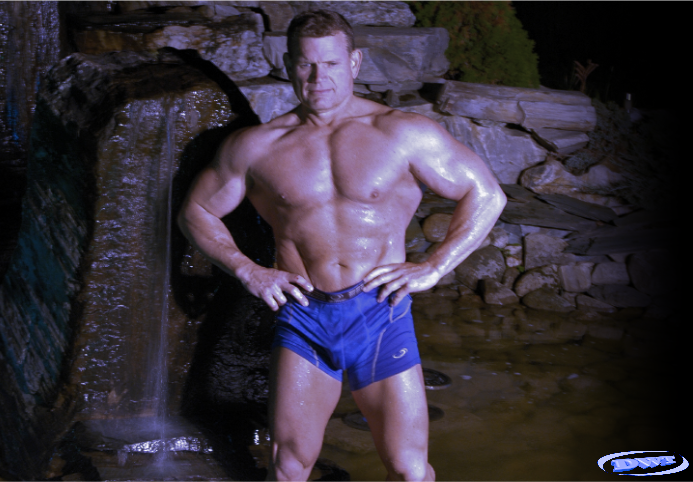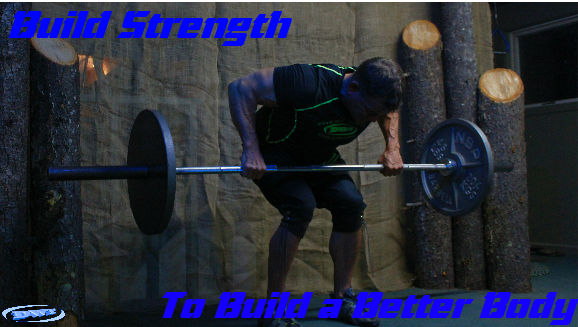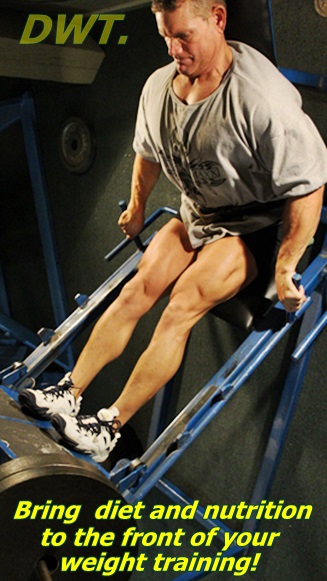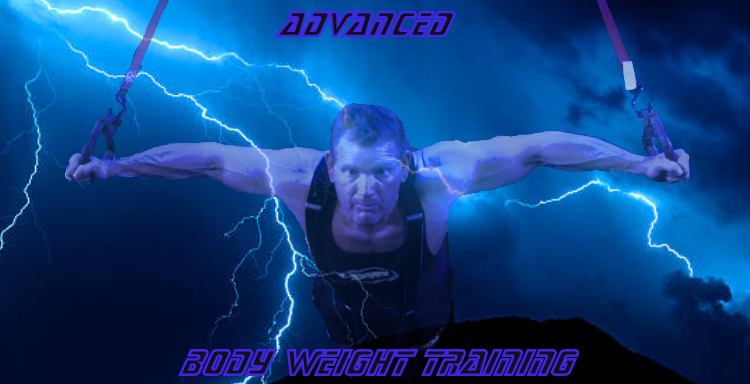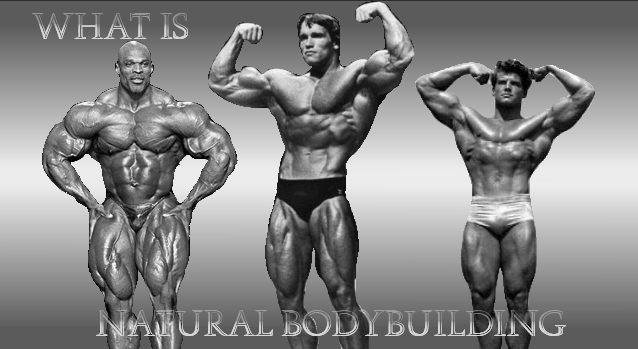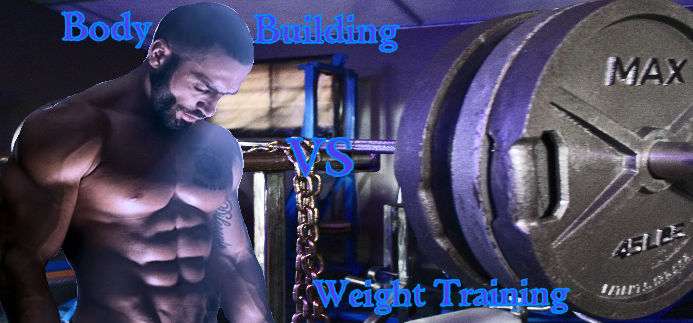Men’s Weight Training To Burn Fat
Weight training to burn fat is an article for men, by implementing a good weight training strategy you can use to shed excess fat once and for all in harmony with your body, and keep it off.
Lets get started today and help you realize your dream and find the motivation to change. Change eating habits, change how you exercise, change your life... for you to enjoy it even more!
Believe in yourself: and believe me, you can do this! never let the curtain of fear get in your way, as it is always behind this curtain... That all dreams are realized.
Weight Training to Burn Fat for men consists of 2 things.
First: NUTRITION, that’s right, guys, a lot of your weight training to burn fat efforts should be a corner stone of strong nutritional practices.
Second: PUMPING IRON, yes; using weight training to burn fat is not a new concept, but… We’re going to add a few new dynamic twists and turns to help you understand and manage body metabolism, we will look at what your RMR and BMR is, and how to increase them.
Nutrition And Training Goals
One of the first things you should ask yourself before starting is: do you have a training goal ? or do you have an idea of what you want to accomplish. Meaning; do you have a clear direction, of what you want to achieve. if not, set a realistic goal.
It is no secret; most people remain somewhat confused about the whole fat loss process; diet gurus thrive on this confusion this is big business and the hucksters know that they can continue to profit at the expense of a growing obesity problem in North America...
By simply offering so-called revolutionary new programs, products and fad diets that will supposedly make fat loss easy, only makes the feeling of confusion worse for most.
Actually, the answers to fat loss are not that complicated, the key to building a great body is to change body composition by focusing on increasing strength and adding lean muscle mass through weight training, and losing fat simultaneously.
Why Weight Training To Burn Fat?
Fat is Adipose non-active tissue, muscle is active. After a one hour long vigorous weight workout - once your conditioned, you can expect to burn close to 10 calories per hour for up to 30 - 35 hours after a workout, depending on intensity.
This ‘after burn effect’ can be calculated daily and weekly’...
So... 10 calories times 24 hours = 240 calories. 240 × 7 days = 1,680 calories per week, 1,680 calories times four weeks = 6,720 calories a month.
If you try to put this in perspective, this is almost 2 pounds of calorie dense fat that your body will burn all from doing one thing after your workout... Nothing!
Not bad, considering over the course of those 35 to 35 hours. You could have been relaxing playing golf, watching TV or afternoon nap, this is a pretty good investment considering you didn’t have to do anything during those hours at work or relaxing... the benefits are the same.
As you can see weight training to burn fat has its perks, for a mere one hour time investment of vigorous weight training the aftermath of these results obviously have longer-lasting fat loss benefits than just doing aerobic - based exercises.
This does not include the calories expended each day of each week from each weight and strength training workout you complete. Try to eat properly sized meals and stay conscious of your nutritional needs for each meal.
The Facts On Muscle And Fat
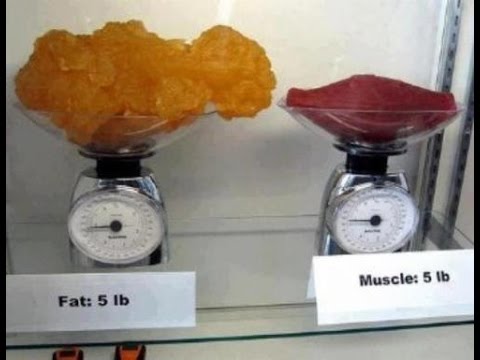
So what weighs more a pound of fat or pound of muscle?
Well, obviously they weigh the same, but, the difference comes into view when they’re viewed side-by-side. The volume of 1 pound of body fat, as opposed to 1 pound of lean muscle mass is less than half the size of fat in comparison.
How many calories in 1 g of fat?
1 gram of fat holds approximately 9 calories. 1 gm of protein approximately 4 gm, and 1 g of carbohydrate also contains approximately 4 calories.
How many calories in 1 pound of body fat?
1 pound of body fat contains approximately 3,500 calories, in a vigorous weight workout for one hour, you may burn between 400 to 600 calories, depending on your size, age, and intensity of the larger muscle groups your training.
One hour of vigorous cycling approximately 500 to 600 calories and running vigorously for one hour burns approximately 500 depending on intensity.
How does weight training to burn fat affect Red muscle fibres?
Red muscle fibre are otherwise known as ‘slow twitch’; There is however, a group of mixed muscle fibres that have some of the properties of both red and white muscle. Red fibres have more energy-based factors than white muscle fibres, translating to better oxygen delivery for aerobic activity.
Red muscle fibre also contains more myoglobin; a (storage form of available oxygen); so for these reasons red muscle fibre is aerobic-based, and capable of tonic properties of muscle contraction.
Meaning: red fibres can hold a contraction for prolonged periods without fatiguing or producing excess lactic acid buildup.
Red muscle fibres are found to be more predominant in muscle groups of the lower extremities such as the legs and extensor muscles required to resist gravity for long periods, e.g., walking or standing stationary, etc. essentially; red muscle fibres primarily metabolize fat.
So what do white muscle fibers do then?
White muscle fibre can be referred to as ‘fast twitch’; white fibre is designed for quick bursts of activity. Therefore described as anaerobic, i.e. they work with less oxygen.
Sprinters/strength athletes, who train entirely by means of maximal exertion or close to; these muscles learn to fire quicker.
The white muscle cells will in- large and get faster and develop anaerobic enzyme systems that make them highly efficient at delivering stored forms of energy.
These fibres are responsible for taking the brunt of the stimulation, when your weight training at lower rep intervals like - 6 to 8. and often have a more thermal, direct link to burning calories over a longer span of time than that of red muscle fibre.
Weight Training To Burn Fat
I have designed a two-part weight training to burn fat routine, this is going to consist of both strength and endurance training these two concepts promote 2 great weight and fat burning strategies:
Starting with your first week we are going to use endurance training, this is going to consist of an exercise circuit.
Keep in mind your age and athletic level and how many extra pounds you carry above your normal weight. If it’s excessive, check with your family Dr. or health care provider before you start any (weight training to burn fat program).
How to set up your endurance weight training circuit
If you’re relatively new to weight training, try the exercises as shown, to see if you can reach the rep and set ranges listed. For the first while, meaning: the first few weeks, be patient with your body give it time to become conditioned.
First: go through the circuit only once. As your conditioning and recovery levels advance, try to set a new goal of going through the circuit twice per – workout. If you can’t, try to at least go halfway through the circuit a second time.
Suggestion: If you are in your 30’s and out of shape, I would suggest have a 30 second rest between every other exercise, as your trying this for the first weeks or month...
If you’re in your 40’s, or older I would suggest: have a 30-40 second rest between each exercise for the first few weeks. No matter what age or conditioning level, the main goal here is to be able to complete the whole circuit with no rest until completed!
Note: before you start your circuit you will have to experiment with your poundage and strength levels, try each exercise, to see what poundage, you can use to gain the desired reps for each exercise.
Training tip: take into account energy levels will be greatly depleted as you go through the circuit so adjust training poundage’s, to accommodate for your fatigue factor. (focus on the repetitions, not the poundage).
Week One Endurance:
This Endurance weight training to burn fat routine should be completed twice a week, starting with Monday and repeating again on Thursday.
let’s get started with Monday :
The warm-up, 10 to 15 minutes of light impact cardio, this can be medium to fast walking on the treadmill, elliptical or exercise bike, or other cardio apparatus of low impact, that you choose, personally…
I prefer to use 2 different of the above-mentioned exercises, just to breakup boredom, e.g. 5 to 7 minutes on the treadmill and then another five or so minutes on the exercise bike, (this your choice).
Take a short break after your cardio, to get your breathing back to where it should be before you start your weight training circuit.
So let's get started...
Barbell Military Press:
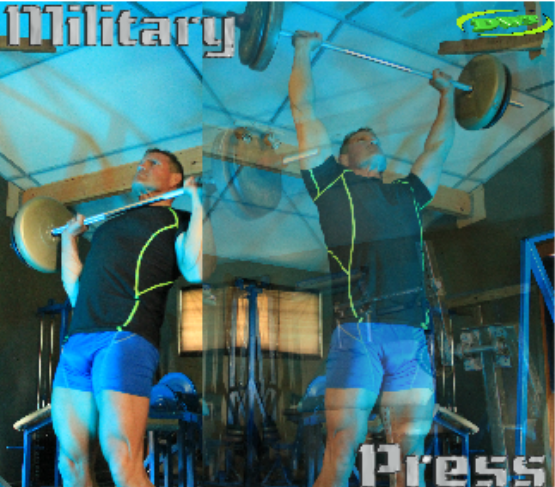
The military press is a great extreme upper body exercise affecting the shoulders, triceps, traps even the legs come in to assist and stabilize on this exercise.
Starting position: have an overhand wider than shoulder width grip, with the bar lightly touching the upper chest, drive the weight upward until you have reached a full range of motion...
Bring the weight back down under control to the starting position, you should really feel this in the front and rear deltoid muscles of the shoulders.
Performance: set 1 rep range 12 - 14, in the beginning, experiment with the resistance to be able to stay in this rep range.
Machine Squats:
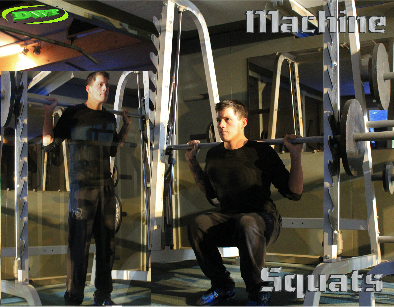
Smith machine squats are relatively easy to perform. Choose the position shown in the illustration with a solid stance, bar resting on the shoulders, release the stops, and begin to lower yourself in a steady motion into a full squat, upper legs should be parallel with the floor.
Drive through your heels, keeping the energy in line with the heels and hips.
Performance: 1 Set Reps 12 - 14
Note: first, choose a resistance level that puts you into this repetition category. Second: you're not trying to go to muscular failure (like strength training), do enough reps so that you can feel the burn before you hang up the weight.
I have set the exercises up to alternate from upper to lower body throughout the circuit, by all means: set the circuit and exercises up in whatever order you feel is the most beneficial.
Plate Raises:
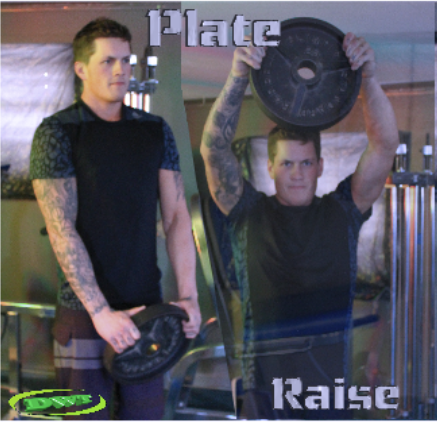
Plate raises are a great upper body endurance based exercise, you can do this with a dumbbell, kettle Bell or in this case a plate weight is being used.
This exercise stimulates the shoulders, biceps and back muscles moving the plate from your waist at arm's length to slightly above head level, completes this range of motion. keep the movement smooth and steady, try not to heave, stabilize the upper body with the legs.
Performance 1 Set Reps 10 - 12
Tip: in this exercise, be sure to choose a weight that you can handle for your level, the idea is not to train till failure, keep your rep range in mind, go until fatigue is felt.
Dumbbell Walking Lunges:
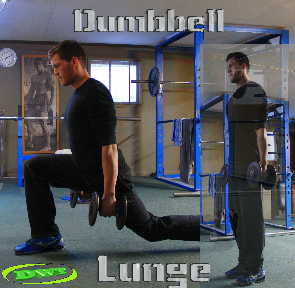
The dumbbell lunge is another great weight training to burn fat exercise; these can be performed either in a walking fashion or standing in the same position and alternating one leg at a time.
The lunge is a great lower body stretching exercise, this builds strength in the hips and the glutes and upper legs, this exercise is also great for enhancing athletic performance and other sports.
Keeping the dumbbells at your sides, step out a good distance to promote the effect of a lunge, the knee should be close to the floor and the toe of the opposite foot should be past the knee of this leg.
Performance: 1 set Reps 8 - 10, each leg.
Barbell Curls:
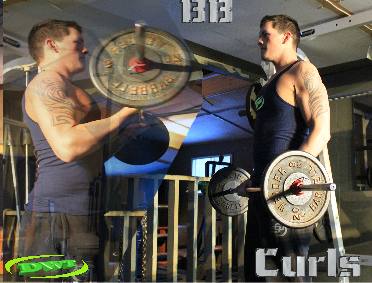
The barbell curl, commonly one of the most popular upper arm biceps exercises, this exercise works the biceps, shoulders, forearms and other stabilizing muscles.
Keep a medium or shoulder width grip with the hands, starting out: pull the bar up with an even motion, try to resist the urge of bringing the hands, all the way to the chest, keeping tension on the biceps, with elbows tight to the sides of your torso, lower the bar in the same manner.
Performance: Set range 1 Rep range 12 - 14, experiment with your poundage levels to reach this rep range.
Parallel bar leg raises:
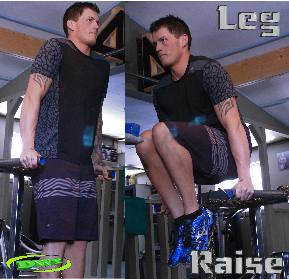
If you don't have an apparatus like this, or don't have the physical strength to perform this exercise that's fine, you can perform them (lying flat on a bench or on the floor).
Take up the position as illustrated with a firm grip on the bars, raise the knees up as high as you can to the chest.
If you do have the use of one of these apparatuses, but you can't get the knees up to the chest, lift them as high as you can, "as you get stronger", your rep range will increase.
Performance: Set 1 Rep range 8 - 10, if you're not strong enough to perform this many reps as mentioned, don't worry about it. Try your best. If you're stronger and can perform this many, do as many as you can try to exhaust the midsection.
Reserve a mid-week day, such as: Tuesday, Wednesdays or Sundays for some abdominal/core exercises for these days. Having a strong core unifies upper and lower body strength .
How to set up your strength training circuit
Strength training is considerably different than the circuit, we'll be focusing on strength, to increase it. So what does increasing your strength have anything to do with weight training to burn fat?
By you increasing your strength, this causes deeper muscle tissue damage.
This deep tissue damage takes longer for the body to heal: which in itself increases strength and size. because muscle is (active tissue) the brain; central nervous system and muscle structure take up the lion’s share of burned calories...
Increasing your strength; builds stronger, thicker muscle bellies...
Which enhances energy demands in the form of calories,
this effectively increases a calorie deficit, in other words: increased strength
excites body metabolism. Strength training also produces a stronger sense of
well-being, which is also another great after workout-bonus.
So how is strength training different?... It’s different because it’s a lower gear than endurance training. The focus is on Strength and moving heavier poundage’s, allowing for longer rests to let the lungs and muscles recuperate between sets.
Week 2 Strength Training:
Your weight training to burn fat Strength routine, should be completed twice a week starting with Monday and repeating again on Thursday.
Again, let’s start with a warm-up - low impact cardio such as: stair master, exercise bike/elliptical trainer, the choice is yours.
This should be 10 minutes no longer, all you want at this point is to warm-up, not exhaust yourself save your energy levels for the weights.
Barbell Deadlifts:
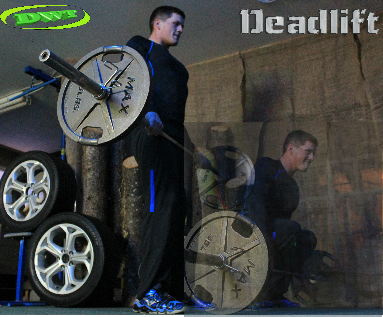
This compound exercise movement, the (dead lift); should be one of the corner-stones of any strength training routine. This exercise works and strengthens the lower and upper back, shoulders, traps, biceps, quadriceps, even the glutes and rear leg biceps all come into play on this lift.
As the image shows take your stance with feet 10 to 12 inches apart, holding the bar with a reverse grip as you begin to lift drive through the heels; not the toes, allow the bar to barely pass by the knees, and straighten out to complete the list.
Sets 2 Rep range 6 - 8, be sure to choose a weight for your lifting level.
Barbell Free Standing Squats:
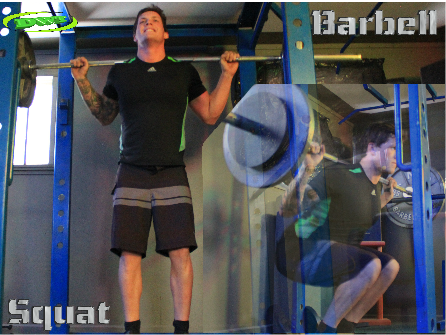
Arguably one of the best overall compound strength building exercise there is. This exercise strengthens and works the quads, leg biceps and calves, even the shoulders and lower back, all come in to assist on this list.
As shown in the image take a 10 to 12 inch wide stance with the bar resting firmly on the traps and shoulders, begin to lower keeping the energy in line with the hips and heels throughout the movement.
Tip:keep the back and shoulders as erect as possible, if you're leaning too far forward, you simply have too much weight.
Set range 2 Rep range 6 - 8, warm-up well, match resistance to your level.
Barbell Bent Over Row:
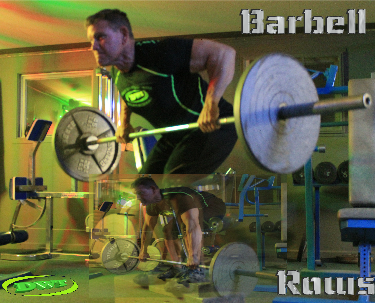
The bent over barbell row is an exceptional upper body compound exercise, most responsible for stimulating the upper and lower back, biceps, forearms, shoulders and trapezius muscles.
A solid crouched stance with an overhand grip, keep the head and shoulders up as you pull the barbell up to your upper abdominals. If you're not capable of lifting the bar to the upper abs or lower chest, you simply have too much resistance.
Set range 2 Rep range 6 - 8, keep the weight suited to your lifting level.
Angled Leg Press:
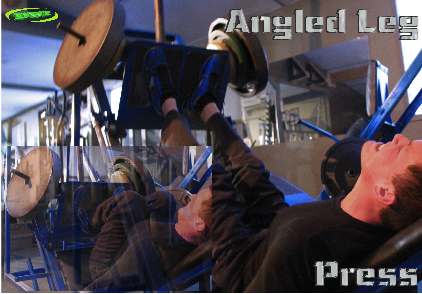
The angled leg press is a great machine based exercise, this movement is great for developing overall lower body strength, more specifically to the quadriceps.
This exercise is nice as you don't have to worry about stabilizing a barbell through this lift, the machine does it for you.
Focus the attention to the leg muscles and keeping the energy in line with the heels and hips. Experiment with foot position until you find a comfortable fit.
Tip: drive through the heels not the toes, try not to roll your butt and hips off of the pad, let the big muscles of the quads to the pushing.
Set range 2 Rep range 6 - 8, use safety and caution if you're new to machines, experiment with poundage's to find your comfort zone.
Clean And Press:
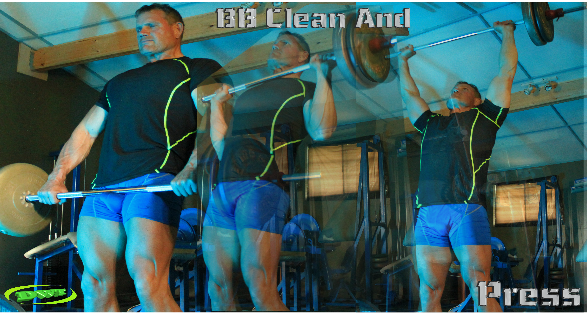
The barbell clean and press is one of the best extreme-upper-body compound exercises there is out there. this strengthens the entire shoulder girdle, including the biceps, triceps, and upper back even the legs have to come in as strong supporting muscles.
keeping a solid stance, with an overhand grip, arms at length pull the bar up in a smooth motion to the shoulders turning the wrists: at this point, complete the press with a full push upwards, as shown.
At the termination point lower in the same manner and return the bar to where you started, for your next rep.
Set range 2 - 3 Rep range 6 - 8, always be sure to warm-up well with any shoulder based movements, be responsible and choose a safe weight for your lifting level.
Your weight training to burn fat strength and endurance routine should be alternated from one week to the next. Meaning: the first week as shown you perform endurance training exercises.
The second week; is reserved for strength training, as shown, Alternate these back and forth, adjust them as to what you feel you need. Stay with the program/routine until you have lost the desired amount of weight.
If you're having troubles or struggling... see contact me, and leave your question and I will get back to you.
In summary:
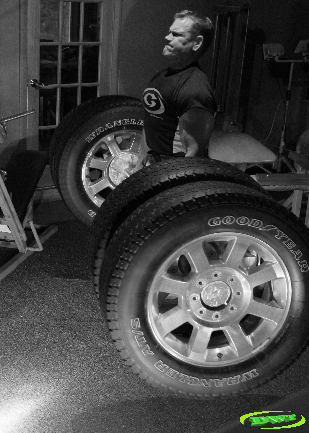
Weight training to burn fat has 3 components: Weight Training, low – moderate impact Aerobics and nutrition. Set a realistic goal and choose a realistic commitment level for yourself.
Choose a few different exercises each week from the exercise menu, start at a realistic level, to develop your strength base.
If you can keep a training log or diary, at least for the first 3 - 6 months will give you a lot of great feedback, that you can go back and adjust for future achievements.
Take the time to Compare and consider using weight training to burn fat-like that of learning a new language. It takes practice and time. But...
The better you get, the faster you get better!
Turn your weight loss into a goal, it makes it a lot easier when you look at things in terms of achieving longer-term goals.
Consider the information in the article, if you're willing to put in the effort like I have here for you, it does work!
Everyone has a winning athlete hidden within, there are no free lunches or rides towards your dream and achieving it. Don't focus on trying to change the world and its problems, focus on yours.
Greatness is not a gift reserved only for superstars, don't wait on the sidelines for your dream of building a better body to come to you? Build a stronger attitude and push yourself towards it.
DWT
